Grzegorz Dudek
Forecasting Cryptocurrency Prices using Contextual ES-adRNN with Exogenous Variables
Apr 11, 2025Abstract:In this paper, we introduce a new approach to multivariate forecasting cryptocurrency prices using a hybrid contextual model combining exponential smoothing (ES) and recurrent neural network (RNN). The model consists of two tracks: the context track and the main track. The context track provides additional information to the main track, extracted from representative series. This information as well as information extracted from exogenous variables is dynamically adjusted to the individual series forecasted by the main track. The RNN stacked architecture with hierarchical dilations, incorporating recently developed attentive dilated recurrent cells, allows the model to capture short and long-term dependencies across time series and dynamically weight input information. The model generates both point daily forecasts and predictive intervals for one-day, one-week and four-week horizons. We apply our model to forecast prices of 15 cryptocurrencies based on 17 input variables and compare its performance with that of comparative models, including both statistical and ML ones.
Combining Forecasts using Meta-Learning: A Comparative Study for Complex Seasonality
Apr 11, 2025Abstract:In this paper, we investigate meta-learning for combining forecasts generated by models of different types. While typical approaches for combining forecasts involve simple averaging, machine learning techniques enable more sophisticated methods of combining through meta-learning, leading to improved forecasting accuracy. We use linear regression, $k$-nearest neighbors, multilayer perceptron, random forest, and long short-term memory as meta-learners. We define global and local meta-learning variants for time series with complex seasonality and compare meta-learners on multiple forecasting problems, demonstrating their superior performance compared to simple averaging.
* IEEE 10th International Conference on Data Science and Advanced Analytics, DSAA'23, pp. 1-10, 2023
HKAN: Hierarchical Kolmogorov-Arnold Network without Backpropagation
Jan 30, 2025



Abstract:This paper introduces the Hierarchical Kolmogorov-Arnold Network (HKAN), a novel network architecture that offers a competitive alternative to the recently proposed Kolmogorov-Arnold Network (KAN). Unlike KAN, which relies on backpropagation, HKAN adopts a randomized learning approach, where the parameters of its basis functions are fixed, and linear aggregations are optimized using least-squares regression. HKAN utilizes a hierarchical multi-stacking framework, with each layer refining the predictions from the previous one by solving a series of linear regression problems. This non-iterative training method simplifies computation and eliminates sensitivity to local minima in the loss function. Empirical results show that HKAN delivers comparable, if not superior, accuracy and stability relative to KAN across various regression tasks, while also providing insights into variable importance. The proposed approach seamlessly integrates theoretical insights with practical applications, presenting a robust and efficient alternative for neural network modeling.
Enhanced N-BEATS for Mid-Term Electricity Demand Forecasting
Dec 02, 2024Abstract:This paper presents an enhanced N-BEATS model, N-BEATS*, for improved mid-term electricity load forecasting (MTLF). Building on the strengths of the original N-BEATS architecture, which excels in handling complex time series data without requiring preprocessing or domain-specific knowledge, N-BEATS* introduces two key modifications. (1) A novel loss function -- combining pinball loss based on MAPE with normalized MSE, the new loss function allows for a more balanced approach by capturing both L1 and L2 loss terms. (2) A modified block architecture -- the internal structure of the N-BEATS blocks is adjusted by introducing a destandardization component to harmonize the processing of different time series, leading to more efficient and less complex forecasting tasks. Evaluated on real-world monthly electricity consumption data from 35 European countries, N-BEATS* demonstrates superior performance compared to its predecessor and other established forecasting methods, including statistical, machine learning, and hybrid models. N-BEATS* achieves the lowest MAPE and RMSE, while also exhibiting the lowest dispersion in forecast errors.
Stacking for Probabilistic Short-term Load Forecasting
Jun 15, 2024Abstract:In this study, we delve into the realm of meta-learning to combine point base forecasts for probabilistic short-term electricity demand forecasting. Our approach encompasses the utilization of quantile linear regression, quantile regression forest, and post-processing techniques involving residual simulation to generate quantile forecasts. Furthermore, we introduce both global and local variants of meta-learning. In the local-learning mode, the meta-model is trained using patterns most similar to the query pattern.Through extensive experimental studies across 35 forecasting scenarios and employing 16 base forecasting models, our findings underscored the superiority of quantile regression forest over its competitors
Any-Quantile Probabilistic Forecasting of Short-Term Electricity Demand
Apr 26, 2024
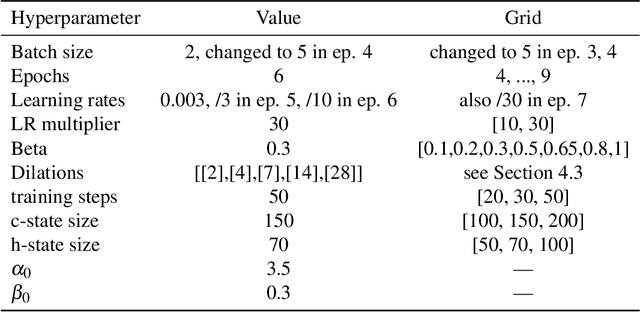
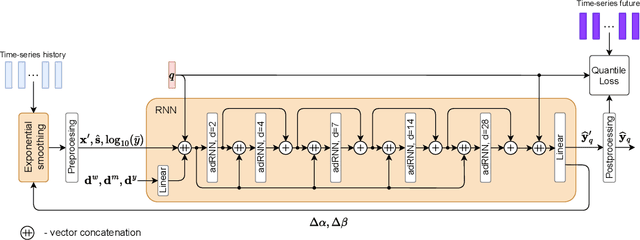
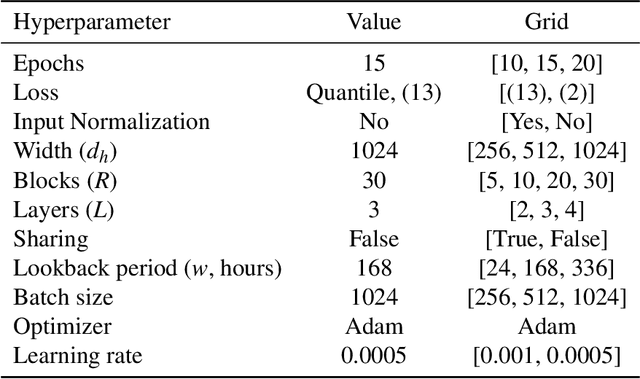
Abstract:Power systems operate under uncertainty originating from multiple factors that are impossible to account for deterministically. Distributional forecasting is used to control and mitigate risks associated with this uncertainty. Recent progress in deep learning has helped to significantly improve the accuracy of point forecasts, while accurate distributional forecasting still presents a significant challenge. In this paper, we propose a novel general approach for distributional forecasting capable of predicting arbitrary quantiles. We show that our general approach can be seamlessly applied to two distinct neural architectures leading to the state-of-the-art distributional forecasting results in the context of short-term electricity demand forecasting task. We empirically validate our method on 35 hourly electricity demand time-series for European countries. Our code is available here: https://github.com/boreshkinai/any-quantile.
Contextually Enhanced ES-dRNN with Dynamic Attention for Short-Term Load Forecasting
Dec 18, 2022Abstract:In this paper, we propose a new short-term load forecasting (STLF) model based on contextually enhanced hybrid and hierarchical architecture combining exponential smoothing (ES) and a recurrent neural network (RNN). The model is composed of two simultaneously trained tracks: the context track and the main track. The context track introduces additional information to the main track. It is extracted from representative series and dynamically modulated to adjust to the individual series forecasted by the main track. The RNN architecture consists of multiple recurrent layers stacked with hierarchical dilations and equipped with recently proposed attentive dilated recurrent cells. These cells enable the model to capture short-term, long-term and seasonal dependencies across time series as well as to weight dynamically the input information. The model produces both point forecasts and predictive intervals. The experimental part of the work performed on 35 forecasting problems shows that the proposed model outperforms in terms of accuracy its predecessor as well as standard statistical models and state-of-the-art machine learning models.
STD: A Seasonal-Trend-Dispersion Decomposition of Time Series
Apr 21, 2022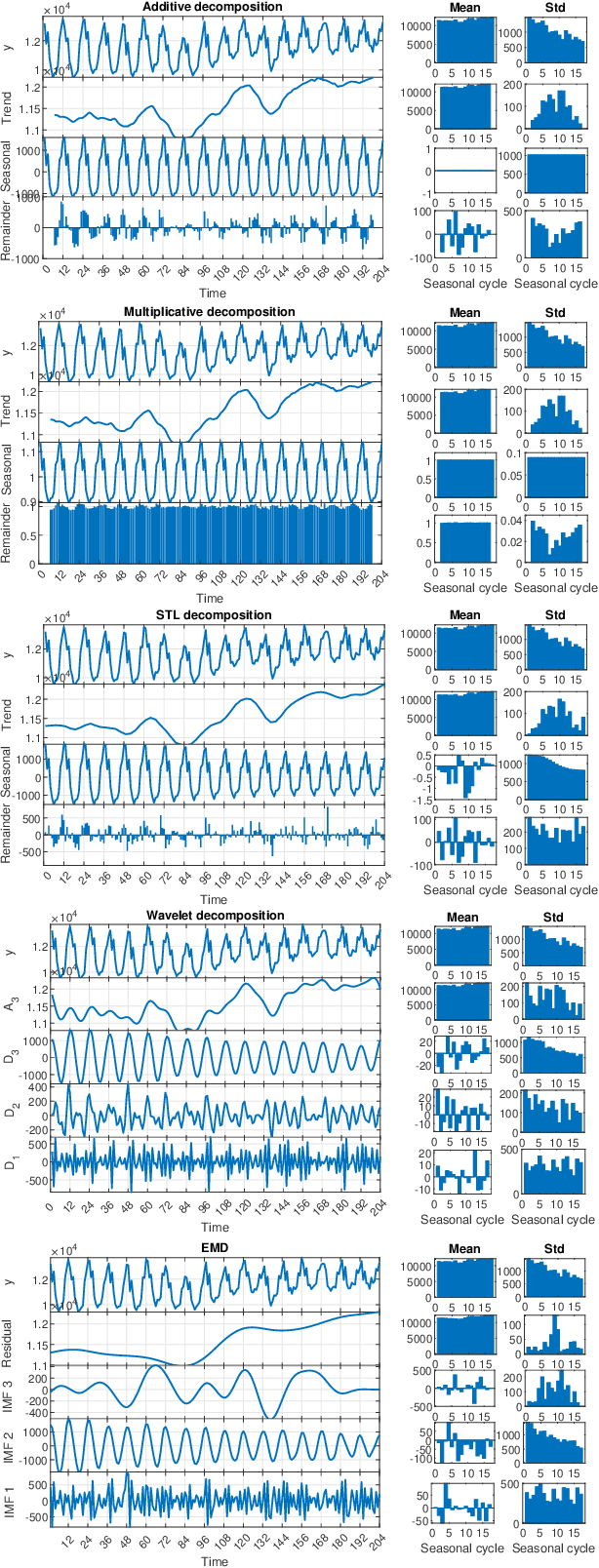

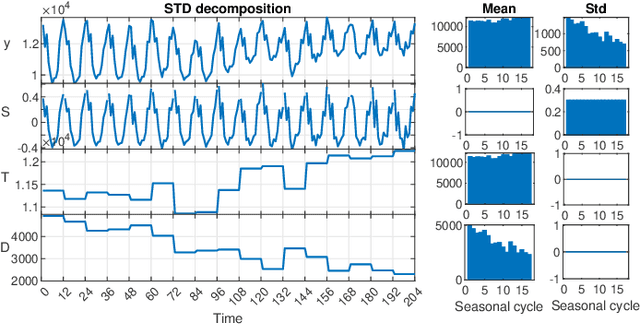
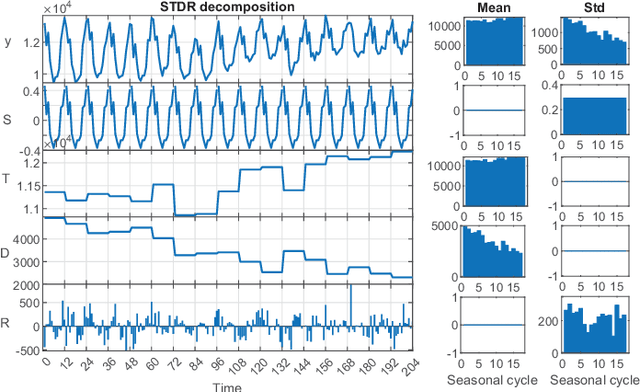
Abstract:The decomposition of a time series is an essential task that helps to understand its very nature. It facilitates the analysis and forecasting of complex time series expressing various hidden components such as the trend, seasonal components, cyclic components and irregular fluctuations. Therefore, it is crucial in many fields for forecasting and decision processes. In recent years, many methods of time series decomposition have been developed, which extract and reveal different time series properties. Unfortunately, they neglect a very important property, i.e. time series variance. To deal with heteroscedasticity in time series, the method proposed in this work -- a seasonal-trend-dispersion decomposition (STD) -- extracts the trend, seasonal component and component related to the dispersion of the time series. We define STD decomposition in two ways: with and without an irregular component. We show how STD can be used for time series analysis and forecasting.
Recurrent Neural Networks for Forecasting Time Series with Multiple Seasonality: A Comparative Study
Mar 17, 2022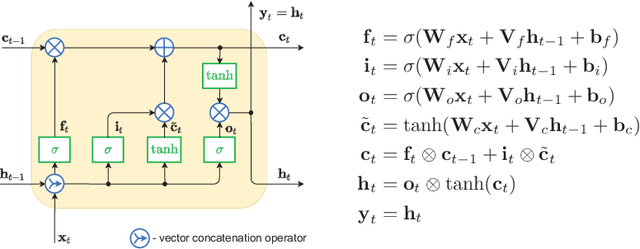

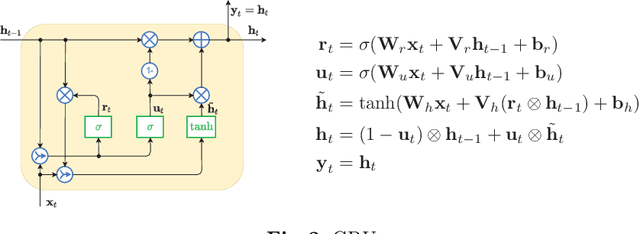

Abstract:This paper compares recurrent neural networks (RNNs) with different types of gated cells for forecasting time series with multiple seasonality. The cells we compare include classical long short term memory (LSTM), gated recurrent unit (GRU), modified LSTM with dilation, and two new cells we proposed recently, which are equipped with dilation and attention mechanisms. To model the temporal dependencies of different scales, our RNN architecture has multiple dilated recurrent layers stacked with hierarchical dilations. The proposed RNN produces both point forecasts and predictive intervals (PIs) for them. An empirical study concerning short-term electrical load forecasting for 35 European countries confirmed that the new gated cells with dilation and attention performed best.
Boosted Ensemble Learning based on Randomized NNs for Time Series Forecasting
Mar 02, 2022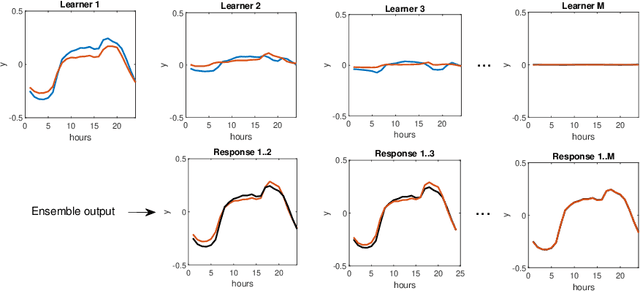
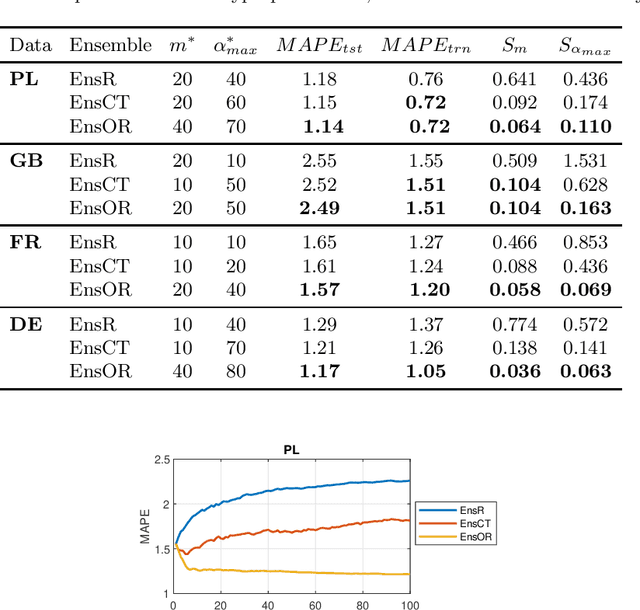
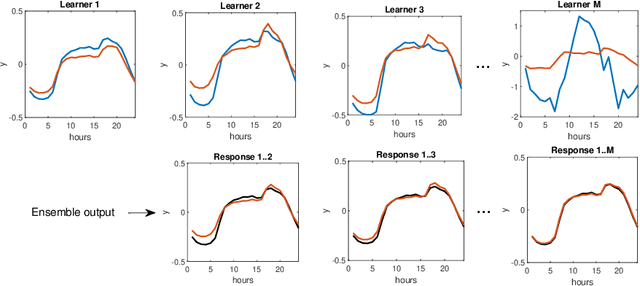

Abstract:Time series forecasting is a challenging problem particularly when a time series expresses multiple seasonality, nonlinear trend and varying variance. In this work, to forecast complex time series, we propose ensemble learning which is based on randomized neural networks, and boosted in three ways. These comprise ensemble learning based on residuals, corrected targets and opposed response. The latter two methods are employed to ensure similar forecasting tasks are solved by all ensemble members, which justifies the use of exactly the same base models at all stages of ensembling. Unification of the tasks for all members simplifies ensemble learning and leads to increased forecasting accuracy. This was confirmed in an experimental study involving forecasting time series with triple seasonality, in which we compare our three variants of ensemble boosting. The strong points of the proposed ensembles based on RandNNs are extremely rapid training and pattern-based time series representation, which extracts relevant information from time series.
 Add to Chrome
Add to Chrome Add to Firefox
Add to Firefox Add to Edge
Add to Edge